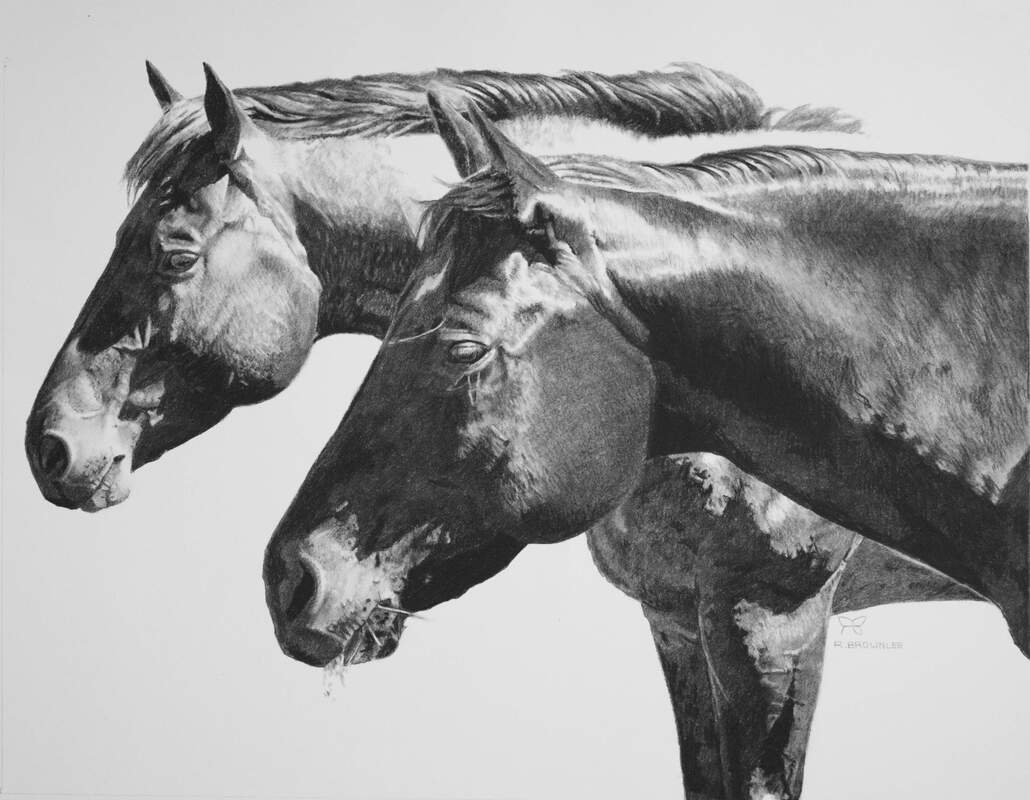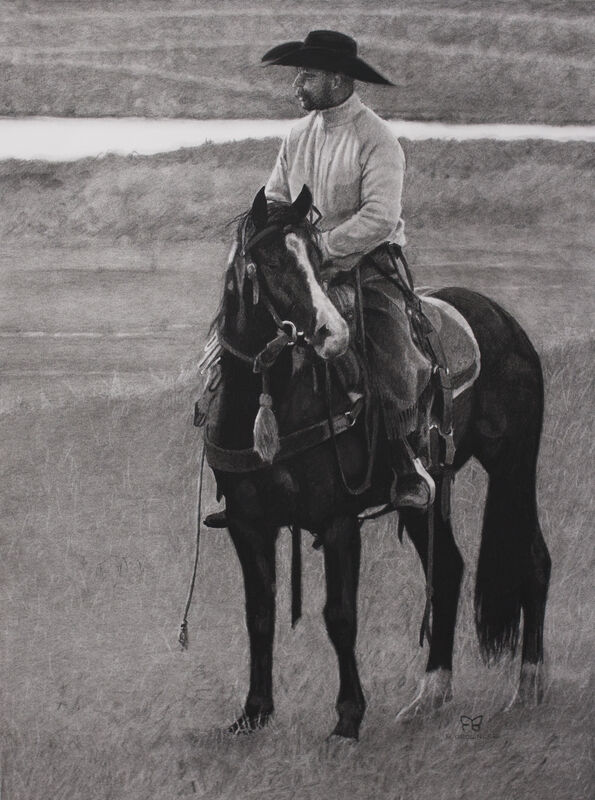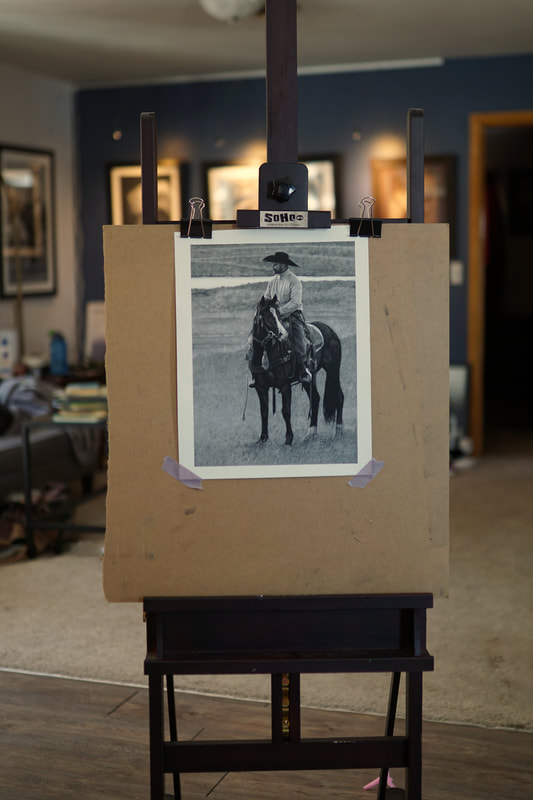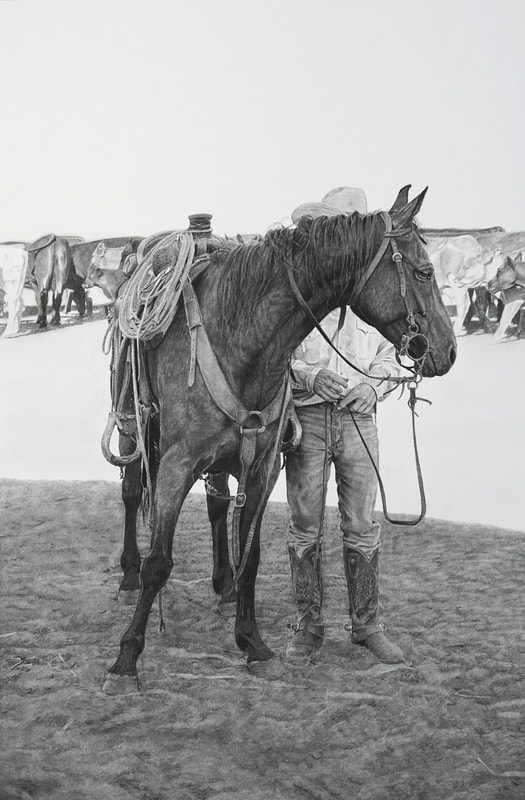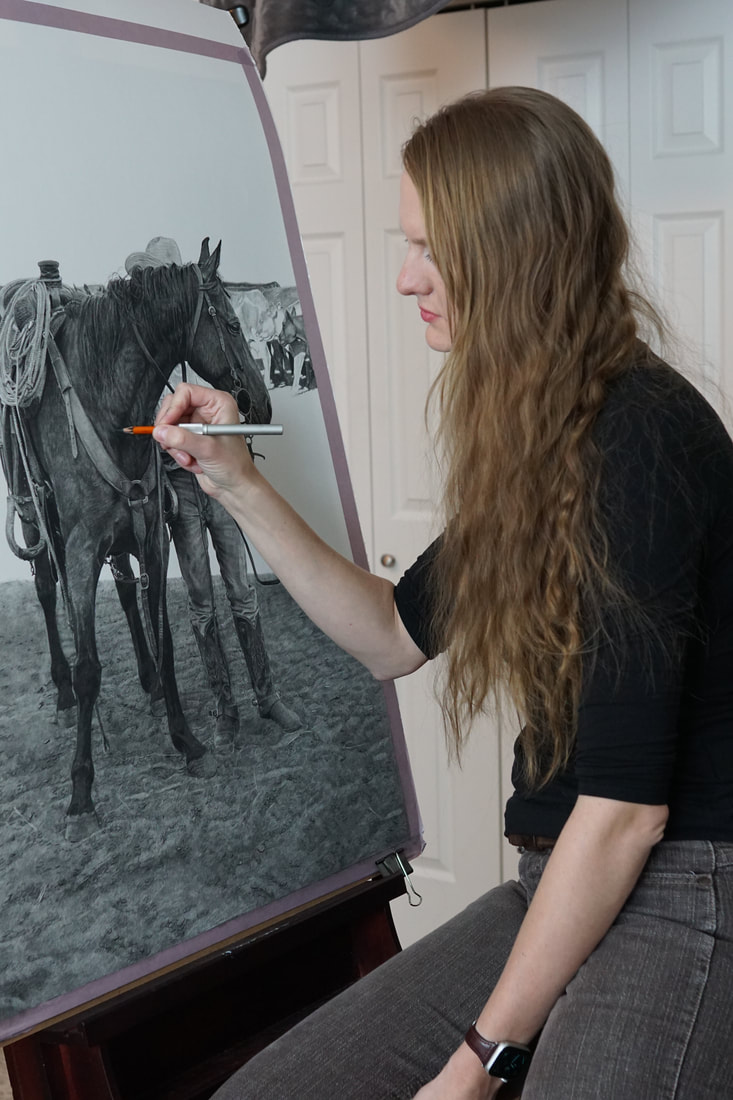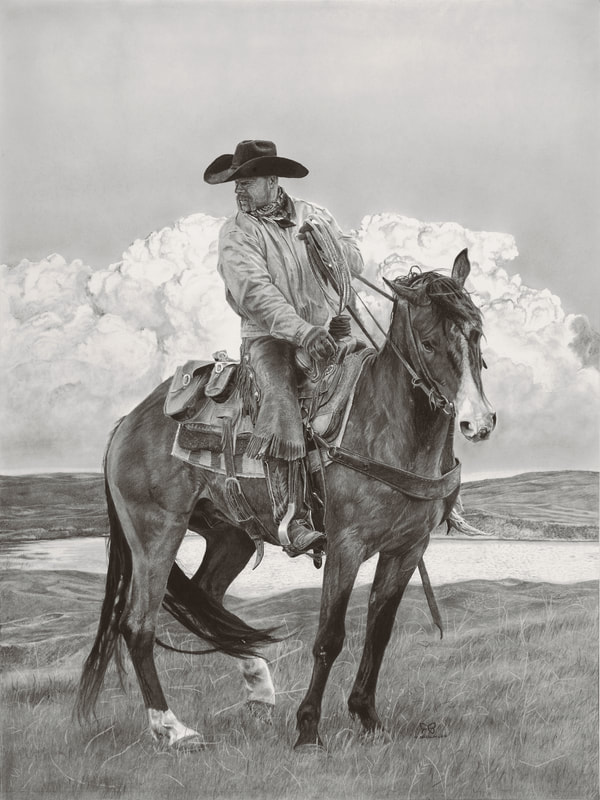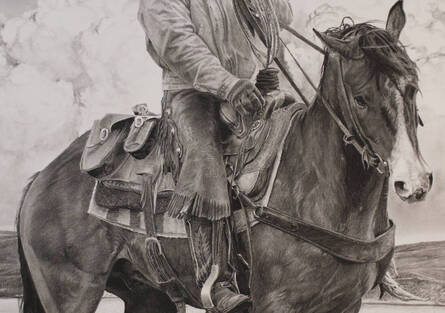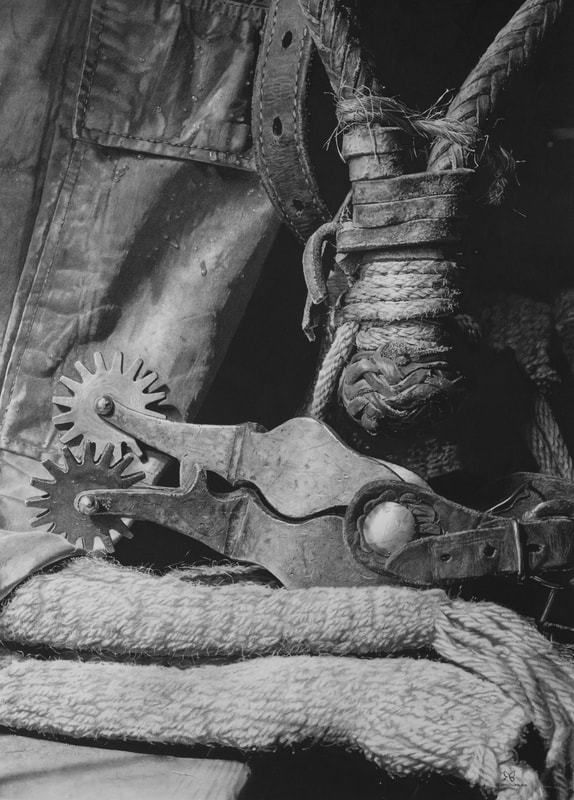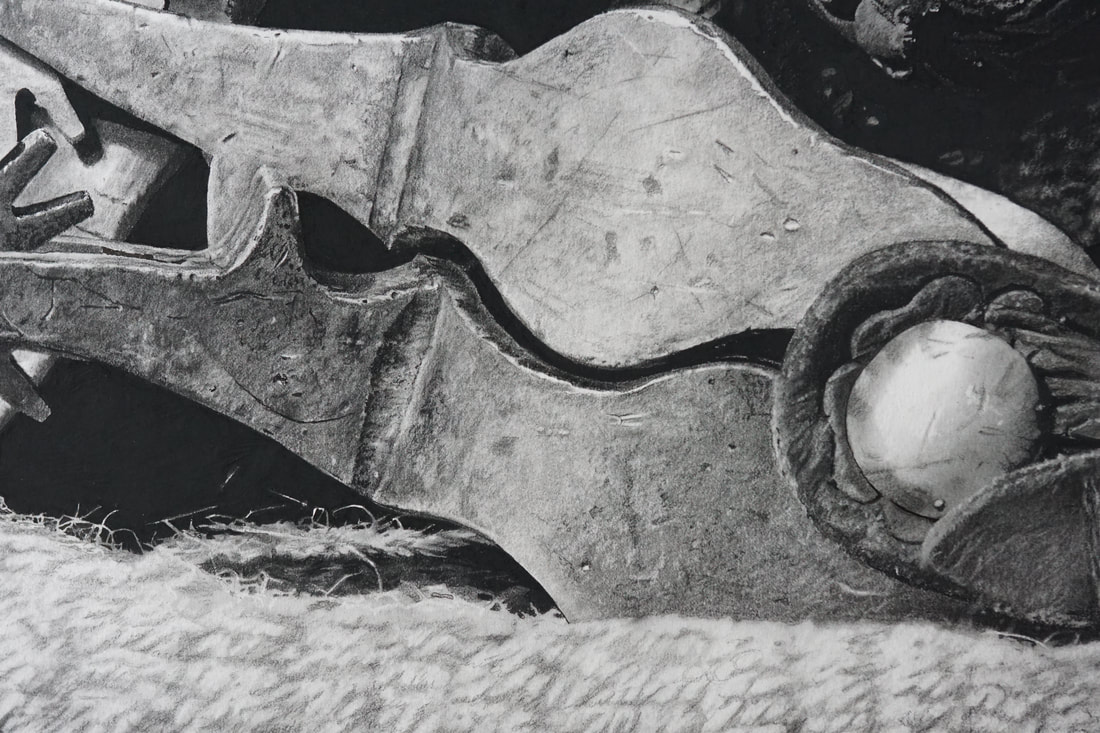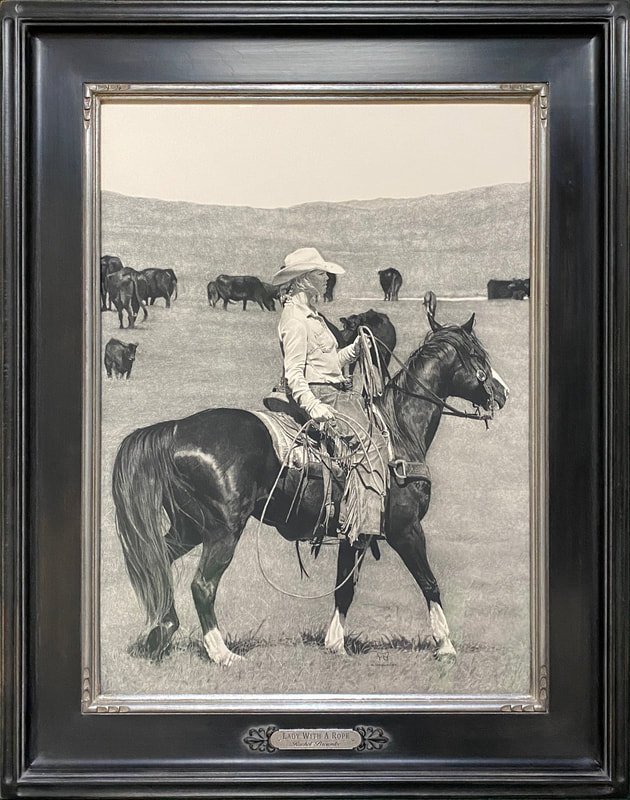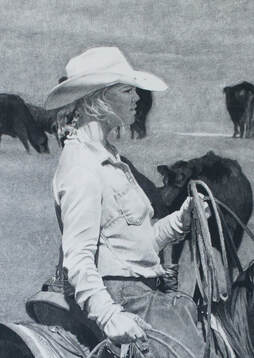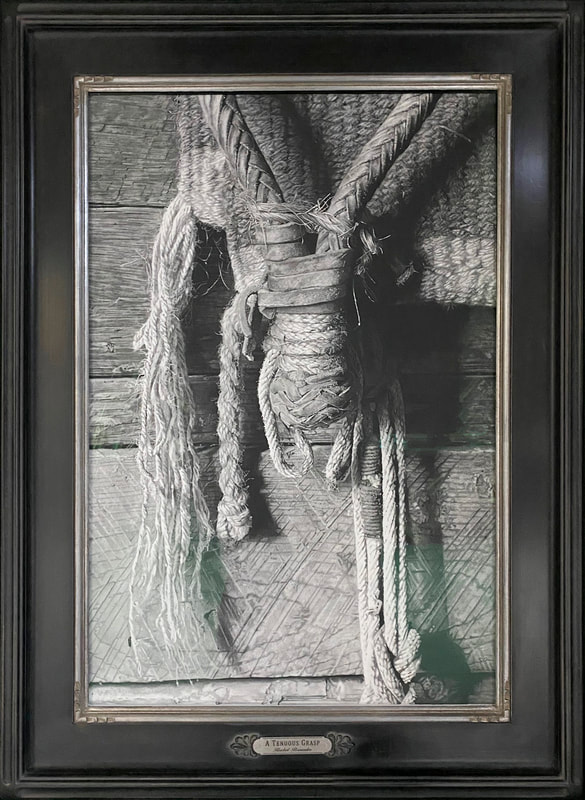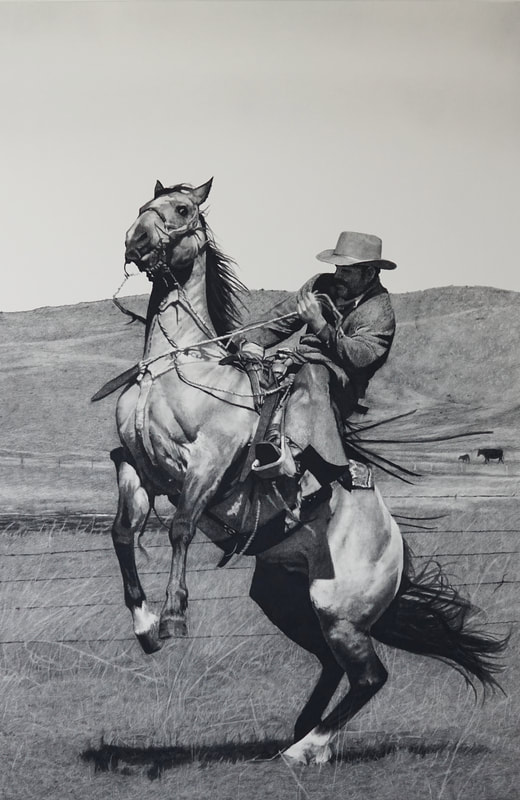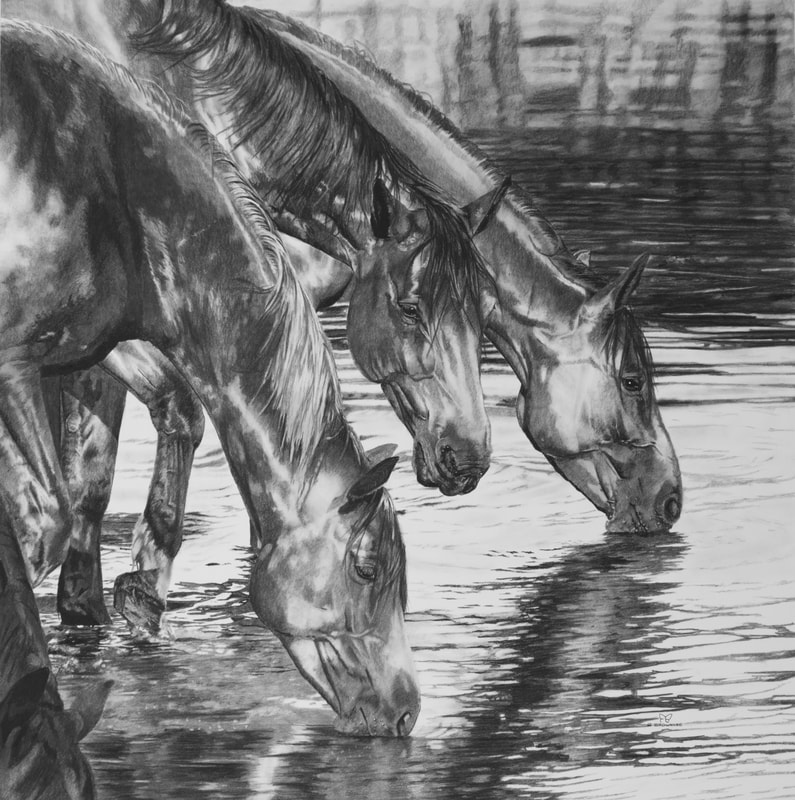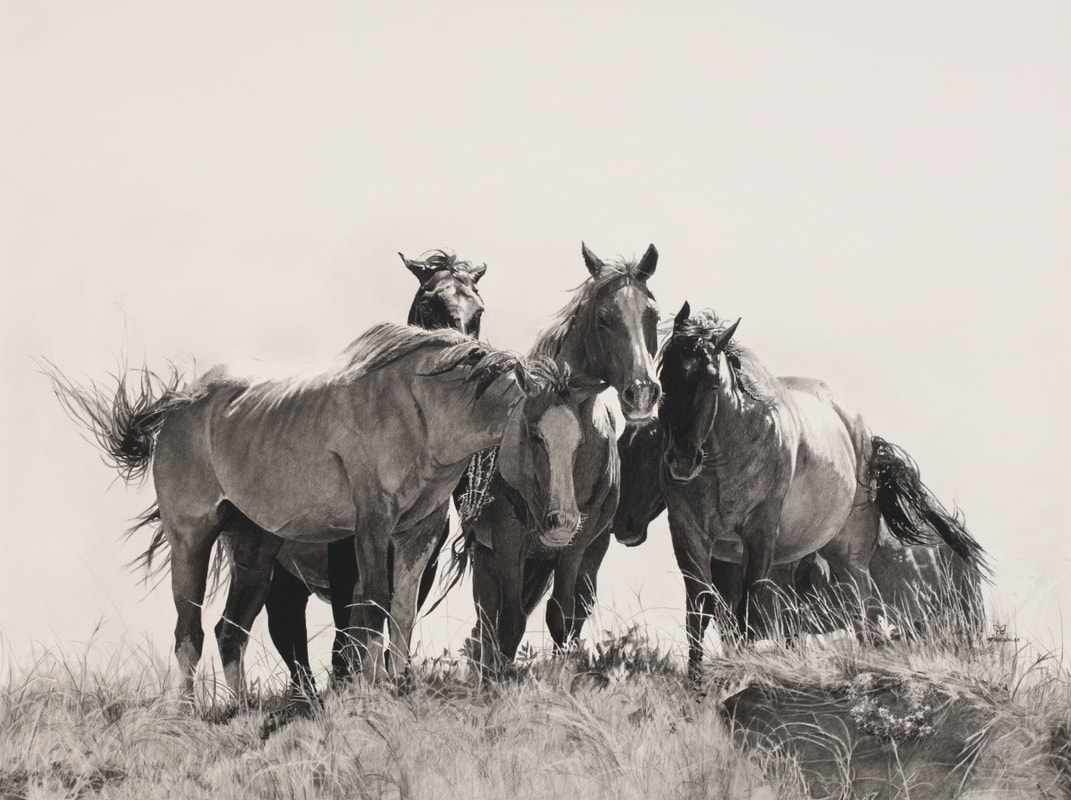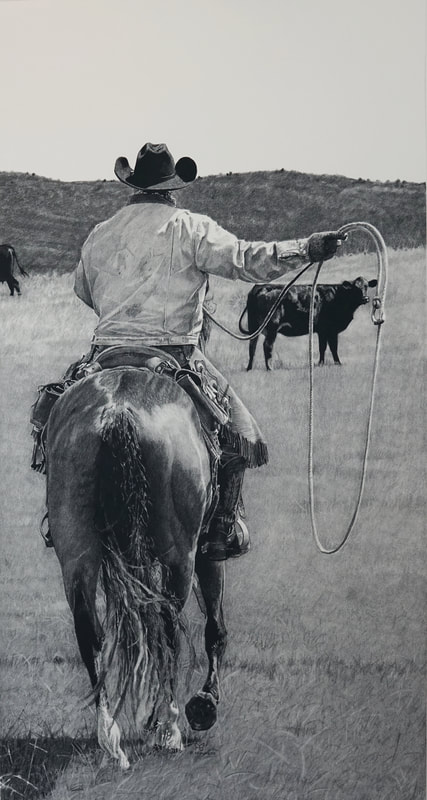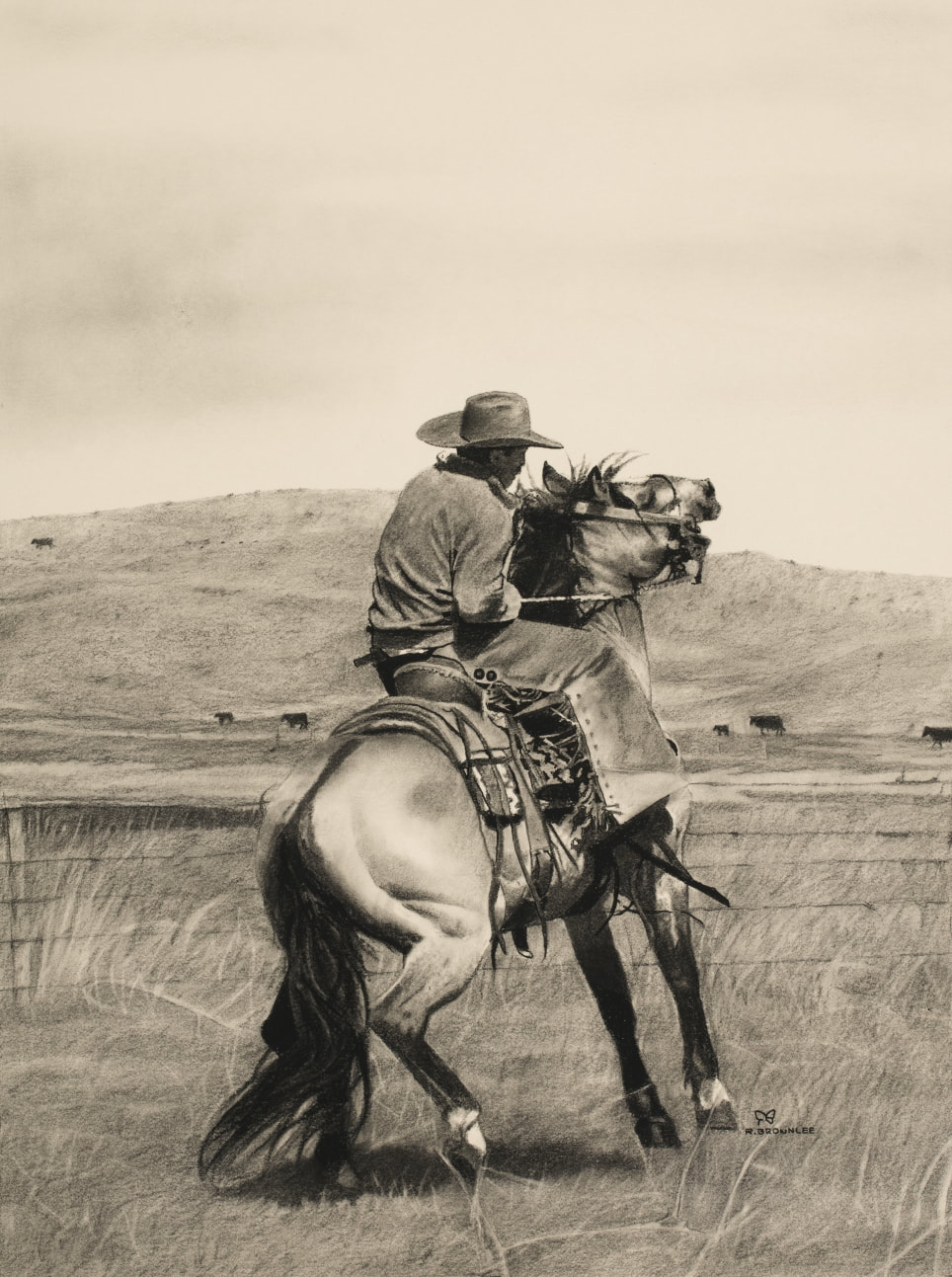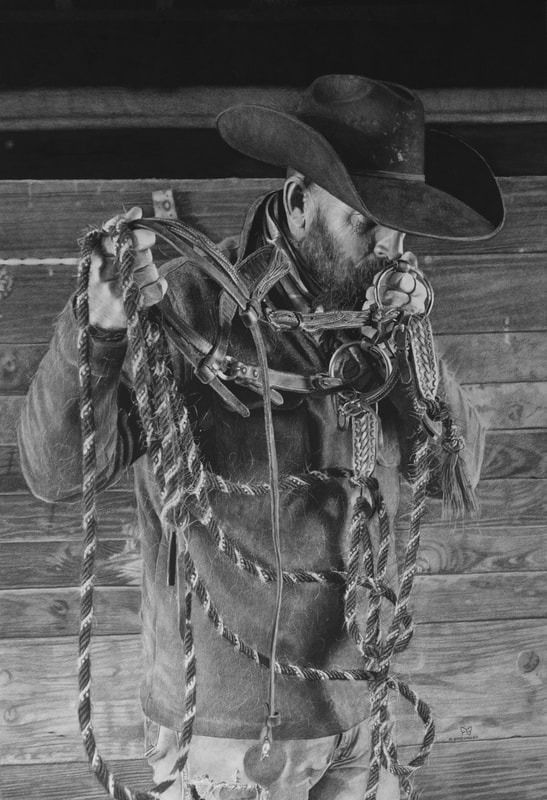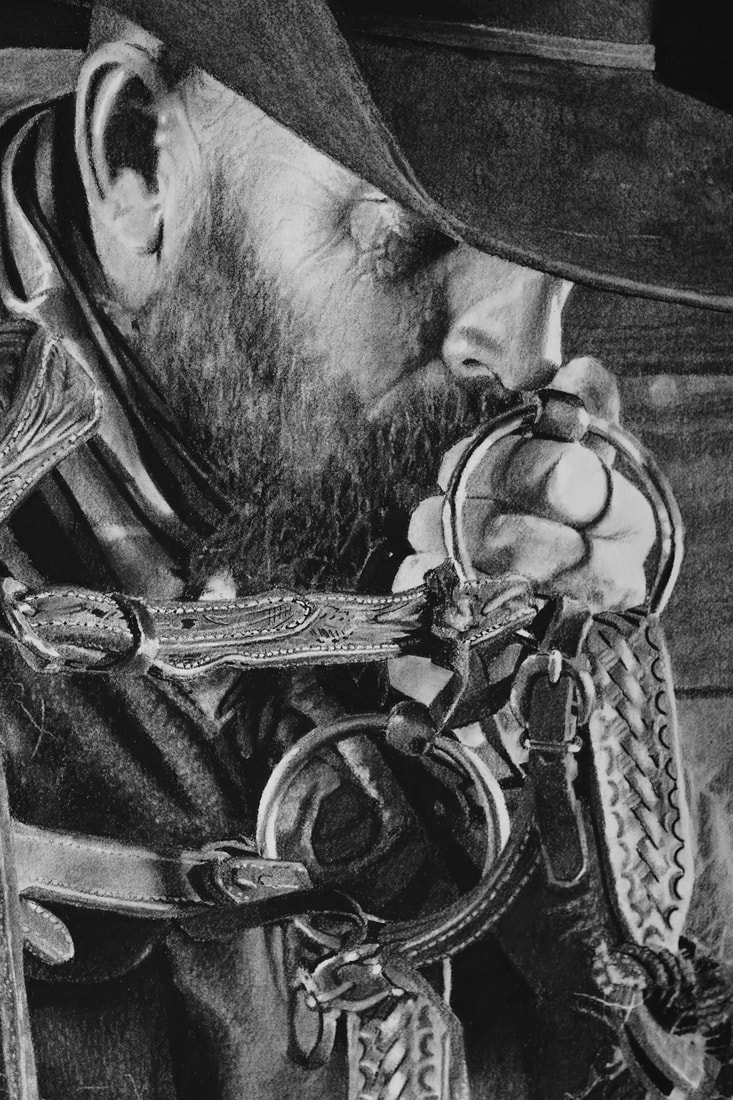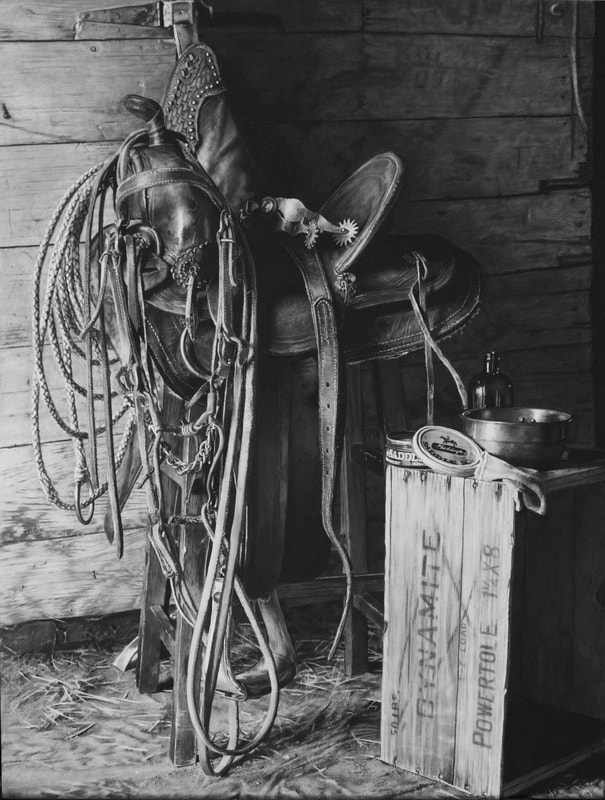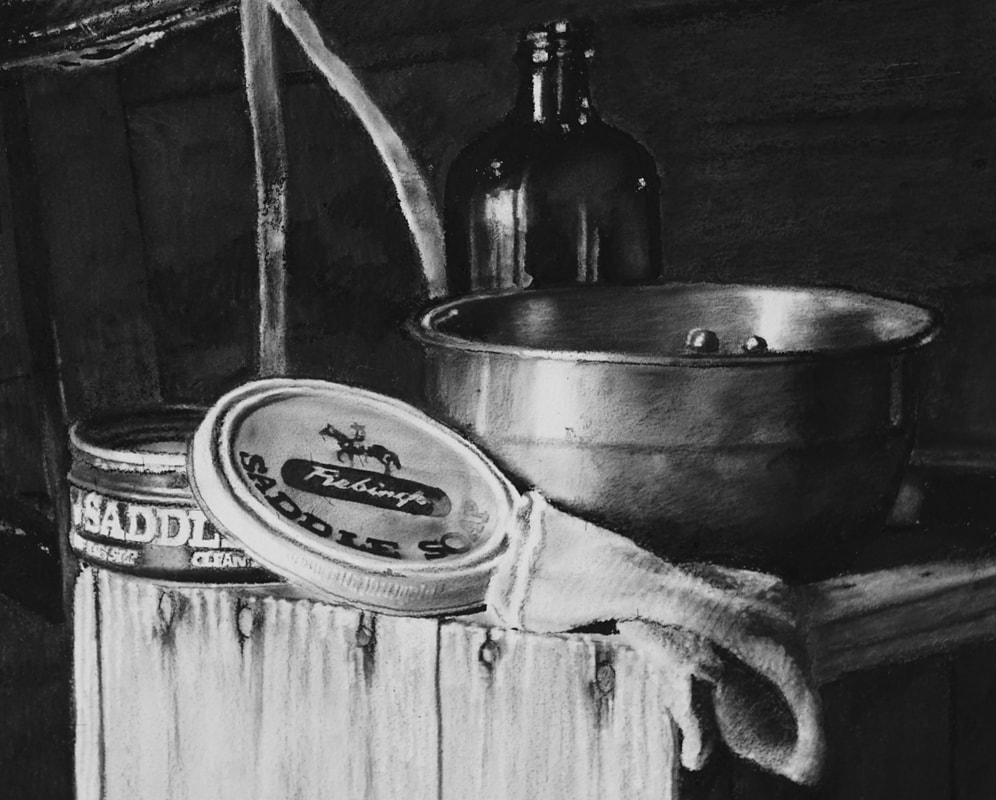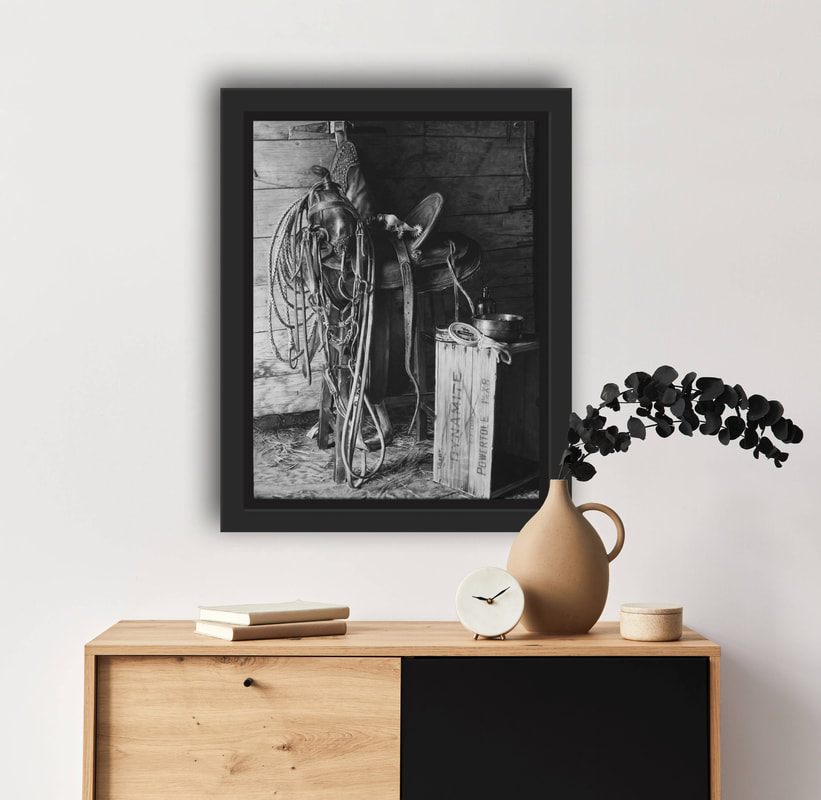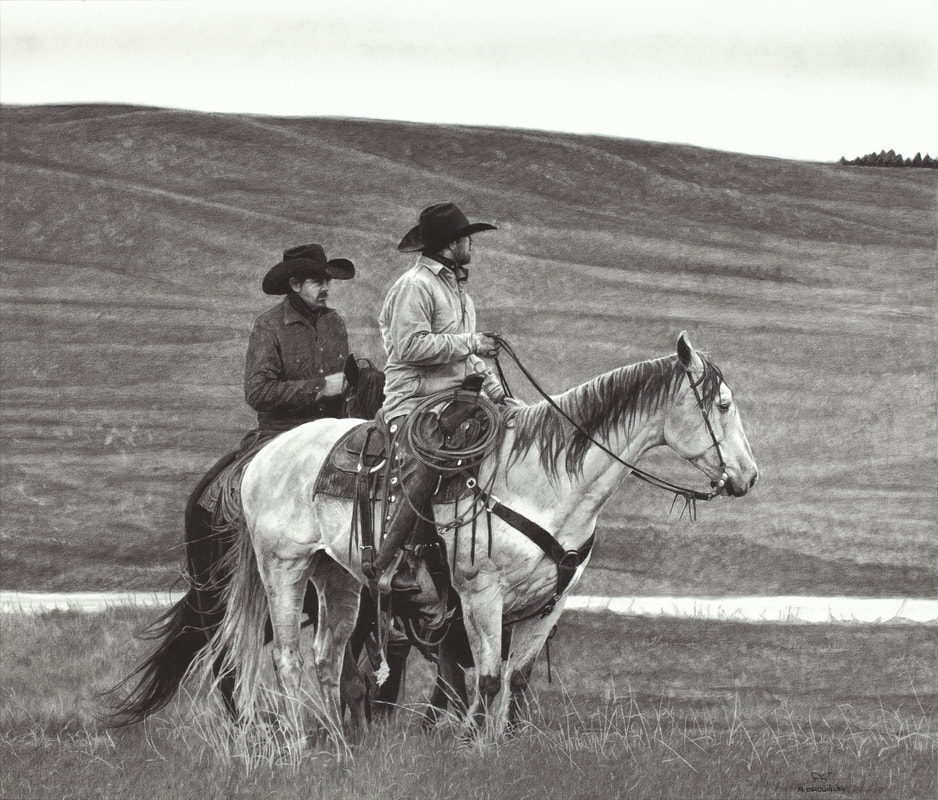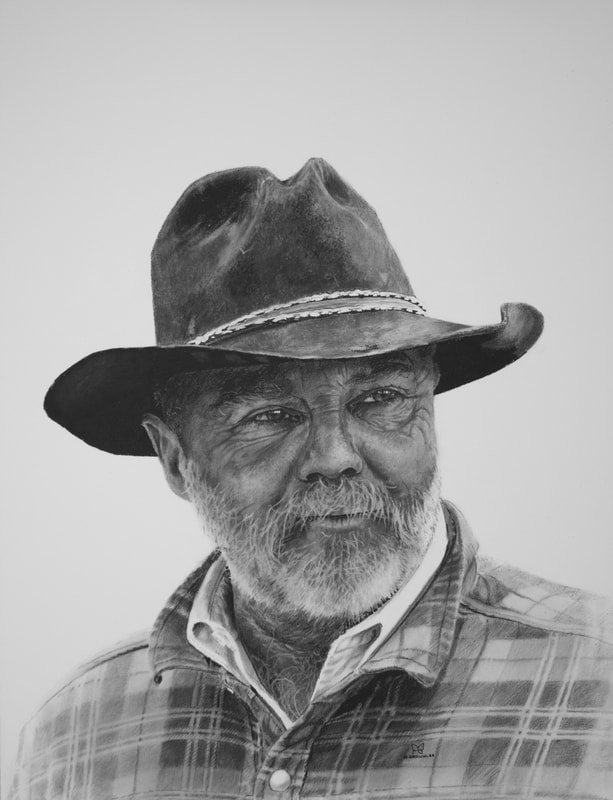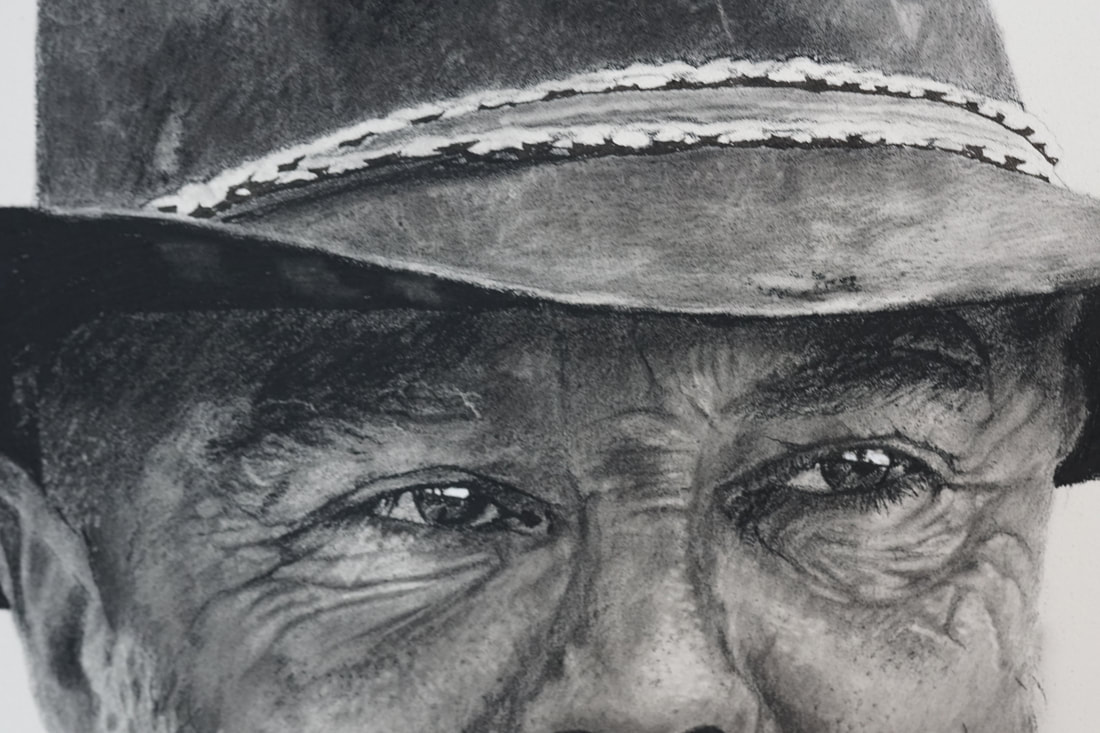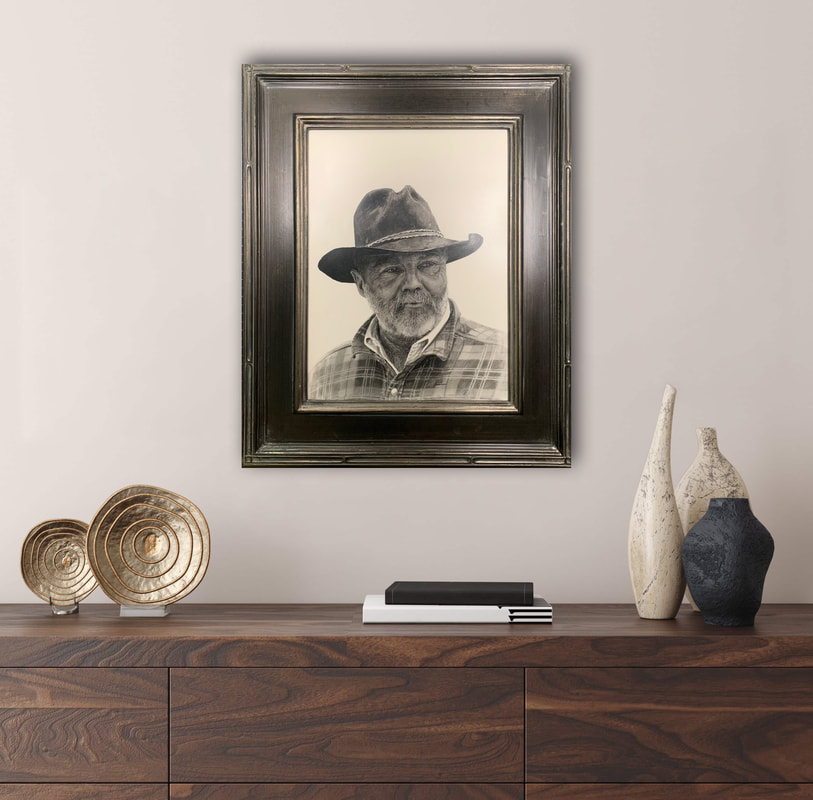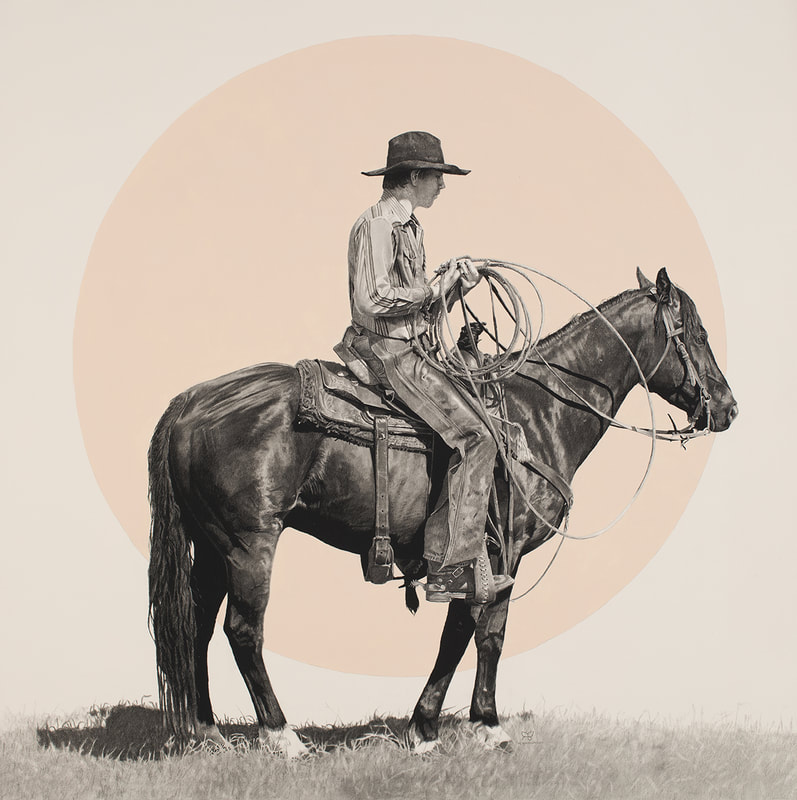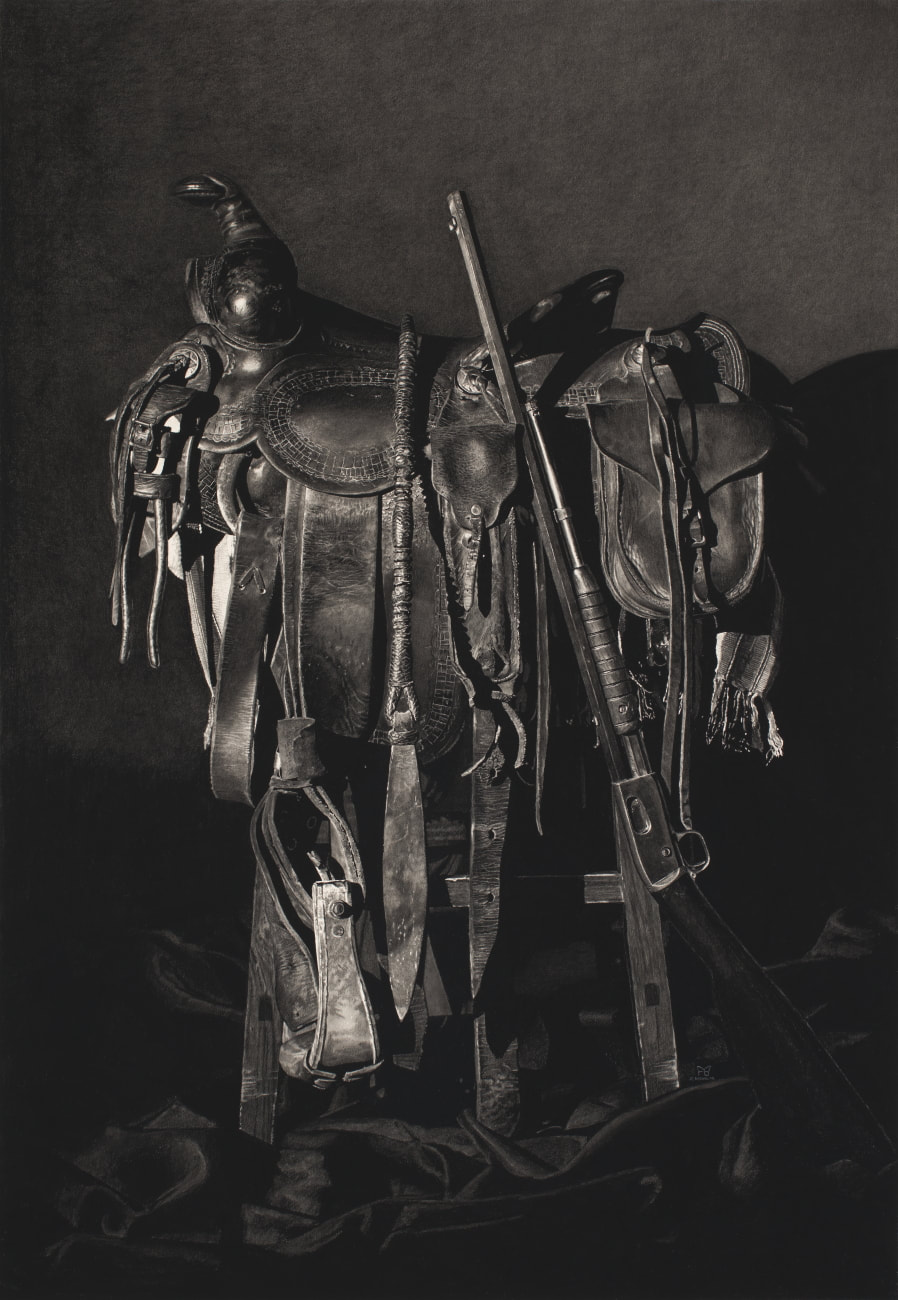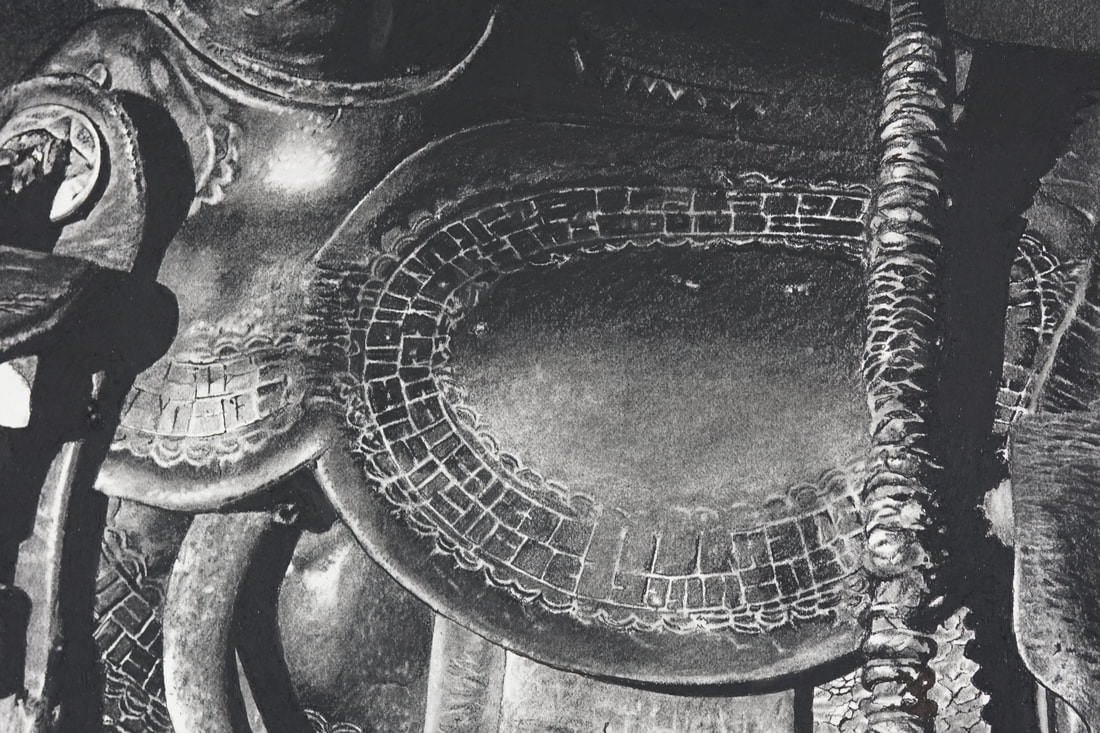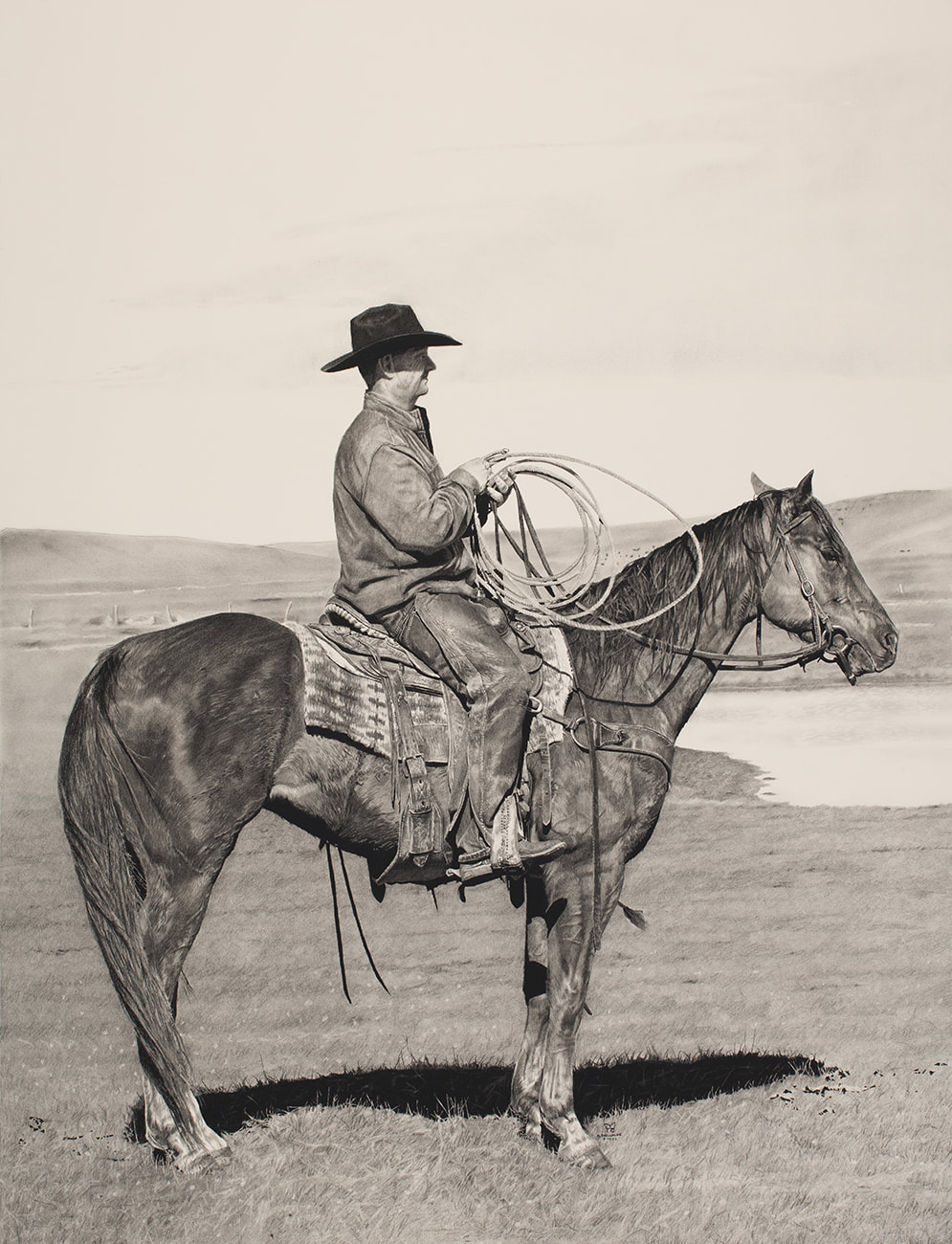Out of the Sun
24 x 36
2022
Charcoal
Sold
2022
Charcoal
Sold
|
This is the largest piece I've done so far. It was a good study in corral sand. If you have ever been in a dry sandy corral you know the texture. You probably also know the feeling of the sun beating on that sand and reflecting back up at you all day, making the heat of the cows hazy.
I've heard a few people say that if you "can't see the feet" of the horse in a drawing then the artist doesn't know how to draw feet. In reality, you can rarely see the feet of horse because of grass, sand or rocks, but here they are, four horse feet and two human feet! |
Experiential Prescience
18 x 24
2022
Charcoal
Sold
2022
Charcoal
Sold
Silver and Rain
22 x 32
2022
Charcoal
Sold
2022
Charcoal
Sold
|
Probably every artist has a set of pieces that are especially significant to them and feel like a real labor of love and effort. This is one of mine. The emotion behind this piece is based on Deuteronomy 11:10-15 which is a promise God gave to the Israelites when He led them out of Egypt. He said that if they followed His commands and loved Him, He would bless their land, their cattle and their crops bringing rain "in its season" and His "eyes would be on their land from the beginning on the year to the end of the year". That promise has been my prayer for our ranch and the Sandhills for the last few years. Our tenure on the land is entirely due, moment to moment, to God's grace in sending rain in its season. In the last few weeks we have had rain ending what so many were afraid was the beginning of a very dry year. Praise God for rain.
|
A Tenuous Grasp
32 x 22
2022
Charcoal
Sold
2022
Charcoal
Sold
|
The piece is titled so because humans do have such a tenuous grasp on life. That is even more obvious in agriculture as livelihoods and lives depend on the right wind, rain, and temperature. Humans have created things like bridles and saddles and wool blankets and barns with rough wood as a small piece of their way to maintain that agriculture life. Look at the detail and the pain that went into the creation of these items, and the drawing itself. Just like the work of human hands, God Himself put intricate detail and love into each person intending them for a greater purpose. He knows each hair and line and He loves them.
|
Still Waters
19 x 19
2022
Charcoal
Sold
2022
Charcoal
Sold
|
"For so the Lord provides His beloved rest".
Sometimes the hardest working of us need rest by the still waters. I was delighted to do a piece showing the shiniest coats paired with the shiniest water. They provide their own technical challenges in drawing. I was able to use hot press paper for this piece which allows brushing charcoal super smoothly, like painting with a brush. |
Companions of the Sun
18 x 24
2022
Charcoal
Sold
2022
Charcoal
Sold
|
This piece shows a group of horses standing together, probably on a hot day, swatting flies. They are herd animals and rely on each other for protection, help, and comfort.
Each has a different age, color and story. Here I used a few new techniques to get a "glow" off the horses to show the extreme brightness and heat of the day. |
Who, me?
15 x 28
2022
Charcoal
Sold
2022
Charcoal
Sold
|
Cows are not dumb. They can feel your intentions like a radar before you even ride over a hill.
This cowboy rides out to rope a very saucy looking heifer, but she already knows what's up. Technically, a few things I explored in this piece were the individual hair reflections on the hindquarters and tail. Also note the flowing and matted tail which is closer to the viewer and moving so it is blurry. I found the right foreleg really interesting and I love that it shows the bottom of the hoof, rarely seen in artwork, but amusing because hooves aren't always trimmed to beautiful circles. |
A Cold Start
20 x 29
2022
Charcoal
Sold
2022
Charcoal
Sold
|
For my viewers who have never lived in rougher, northern climes, unless your bridles are kept in a heated room, ideally you should warm the bits before bridling your horse to keep an ice cold bit from sticking to your horse's tongue. You wouldn't enjoy licking a frozen metal pole, and neither do they!
This piece features my brother-in-law saddling horses one early morning with a standard western bridle, an o-ring snaffle bit, and horse hair mecate reins. Some of my pieces are inspired by historical poetry and this one was born of the thought behind Rudyard Kipling's poem "If..." If you can keep your head when all about you Are losing theirs and blaming it on you, If you can trust yourself when all men doubt you, But make allowance for their doubting too; If you can wait and not be tired by waiting, Or being lied about, don’t deal in lies, Or being hated, don’t give way to hating, And yet don’t look too good, nor talk too wise: If you can dream—and not make dreams your master; If you can think—and not make thoughts your aim; If you can meet with Triumph and Disaster And treat those two impostors just the same; If you can bear to hear the truth you’ve spoken Twisted by knaves to make a trap for fools, Or watch the things you gave your life to, broken, And stoop and build ’em up with worn-out tools: If you can make one heap of all your winnings And risk it on one turn of pitch-and-toss, And lose, and start again at your beginnings And never breathe a word about your loss; If you can force your heart and nerve and sinew To serve your turn long after they are gone, And so hold on when there is nothing in you Except the Will which says to them: ‘Hold on!’ If you can talk with crowds and keep your virtue, Or walk with Kings—nor lose the common touch, If neither foes nor loving friends can hurt you, If all men count with you, but none too much; If you can fill the unforgiving minute With sixty seconds’ worth of distance run, Yours is the Earth and everything that’s in it, And—which is more—you’ll be a Man, my son! |
Cleaning Day
18 x 24
2022
Charcoal on board
Sold
2022
Charcoal on board
Sold
|
Growing up, my siblings and I would take all our tack and throw it on a stool or a couple chairs and use saddle soap and oil to clean all of it at once.
This saddle belonged to my husband's aunt and she bought it used 50 some years ago from a local saddle repair place. She gave it to me recently. It is a Coggshall from Miles City, Montana. The spurs were my dad's, the bridle was my mother's-in-law, the rawhide rope is a neighbor's, and everything else is just my own working stuff. The dynamite crate was a gift from an elderly friend whose occupation was blowing up ice clogs in Nebraska rivers. Each detail and scuff tells a story. This piece was done on mounted board so it is available without glazing as it is varnished like any other painting. |
Velvet Hills
22 x 19
2022
Charcoal
Sold
|
The Nebraska Sandhills have a unique ecology unlike almost anywhere in the world consisting of grass stabilized sand dunes. It is only about 20,000 square miles in size. Because it is such a small and unique area, I have rarely seen it depicted in western art even though the Sandhills are one of the remaining areas where traditional western life and work are still common. I think people have felt it is either too difficult to capture the soft beauty of the Sandhills or they mistakenly think the landscape is boring. I hope to clearly show the beauty of this place and its people over my career as an artist. I think, like the ocean, this is a place one has to spend a life looking at in order to see it.
I did this piece on Strathmore Bristol 500 cotton paper because it is incredibly smooth. Most charcoal artists avoid bristol because they need the "tooth" to hold charcoal. It is true that a rougher texture makes darker blacks easier, but bristol has a really unique advantage: it allows the me to "slide" the charcoal around and more easily achieve the velvety texture in this piece. |
Rise and Shine
29 x 29
2022
Charcoal and acrylic
Sold
2022
Charcoal and acrylic
Sold
|
“Rise and Shine” depicts a young man and his horse, youthful in time, but skilled through experience. The sun is just rising on their lives, but they are “old hands” at their jobs. The focus of the piece is meant to be the man’s hands holding the rope with such practiced habit and his horse attentively awaiting his command.
|
The Fencing Rig
43 x 29
2022
Charcoal
Sold
2022
Charcoal
Sold
|
This saddle was built between 1914 and 1930 in Alliance, Nebraska by Newberry custom saddles. It was a custom piece commissioned by someone with the initials E.P.H., but that individual's identity is lost to history. My grandfather bought this saddle used, left it to my dad, and now is in use by my sister. Growing up it meant a lot to me because I thought it was so historical and so fancy. Neither of those may be the case, but it has served many generations faithfully and stands a symbol of truly living in a saddle.
Note the fencing pliers and fencing staple bag. This saddle was used daily for moving cattle, but also for fixing any broken fence along the way. This piece has been the recipient of two awards: The 12th Annual Strokes of Genius International Drawing Competition-Honorable Mention The 40th Annual Museum of Western Art Roundup Exhibition - Patron's Award |
Established
29 x 38
2022
Charcoal
2022
Charcoal
|
One of my prayers for my artwork and my general life is that God would "establish the work of my hands" because so often we can work so hard at something and feel it slip between our fingers. So it is the same with ranching; a lifetime spent building for another generation. I encourage you to pray that God would let your work be established and not in vain.
"Let the favor of the Lord our God be upon us, and establish the work of our hands upon us; yes, establish the work of our hands!" Psalm 90:17 |


